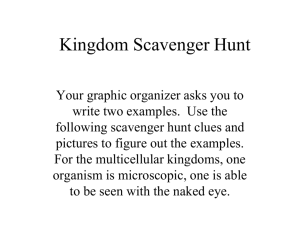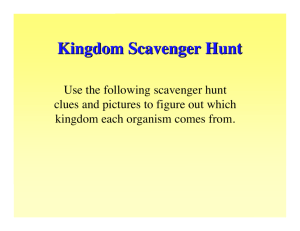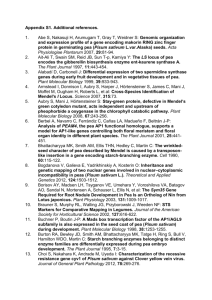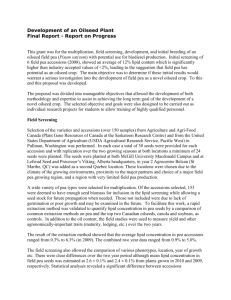Quarterly Progress Assessment #2 Review Sheet A. Punnett
advertisement
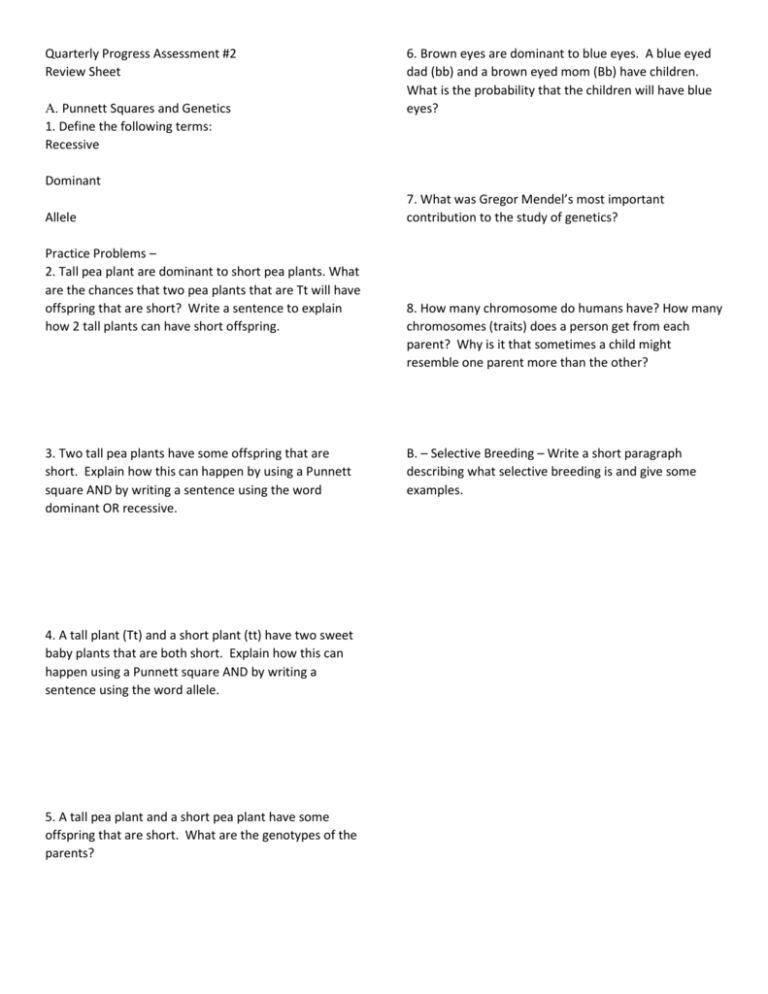
Quarterly Progress Assessment #2 Review Sheet A. Punnett Squares and Genetics 1. Define the following terms: Recessive 6. Brown eyes are dominant to blue eyes. A blue eyed dad (bb) and a brown eyed mom (Bb) have children. What is the probability that the children will have blue eyes? Dominant Allele Practice Problems – 2. Tall pea plant are dominant to short pea plants. What are the chances that two pea plants that are Tt will have offspring that are short? Write a sentence to explain how 2 tall plants can have short offspring. 3. Two tall pea plants have some offspring that are short. Explain how this can happen by using a Punnett square AND by writing a sentence using the word dominant OR recessive. 4. A tall plant (Tt) and a short plant (tt) have two sweet baby plants that are both short. Explain how this can happen using a Punnett square AND by writing a sentence using the word allele. 5. A tall pea plant and a short pea plant have some offspring that are short. What are the genotypes of the parents? 7. What was Gregor Mendel’s most important contribution to the study of genetics? 8. How many chromosome do humans have? How many chromosomes (traits) does a person get from each parent? Why is it that sometimes a child might resemble one parent more than the other? B. – Selective Breeding – Write a short paragraph describing what selective breeding is and give some examples. C. – Mitosis and Meiosis Mitosis Meiosis E. Write down the equations for photosynthesis and cellular respiration. Now, memorize their reactants and their products. types of cells produced purpose describe the cells produced F. Describe the relationship between genes, chromosomes, DNA, and the nucleus. D. Sexual vs. Asexual reproduction Sexual Asexual definition parents offspring's genes offpsring compared to parents G. – Classification 1. Write the levels of classification from broadest to most specific. Now memorize this order. Which group has the most similarities? The least similarities? 2. Dichotomous Key Use the following chart to determine the kingdom of each organism. 1 2 3 4 5 a. prokaryotic b. eukaryotic a. cell walls have peptidoglycan b. cell walls do not have peptidoglycan a. cells have cell walls b. cells do not have cell walls a. cells wall contain cellulose b. cells walls contain chitin a. multicellular b. unicellular go to 2 go to 3 Eubacteria Archaebacteria go to 4 Animalia go to 5 Fungi Plantae Protista a. A unicellular organisms with a nucleus that has cell walls that contain cellulose __________________________________________ b. An organism that does not have a nucleus and has cell walls made of peptidoglycan ___________________________________________ c. An organism that does not have a nucleus and cells wall are NOT make of peptidoglycan _____________________________________________ d. A multicellular organisms with a nucleus that has cell walls that contain cellulose _____________________________________________ e. An organism with a nucleus and cell wall made of chitin.______________________________________ f. An organism with a nucleus and no cell walls _____________________________________________ What is the difference between each of the following kingdoms? Plants and animals Protists and fungi Protists and plants Fungi and plants Bacteria and plants Animals and fungi Bacteria and fungi Bacteria and animals Animals and protists

